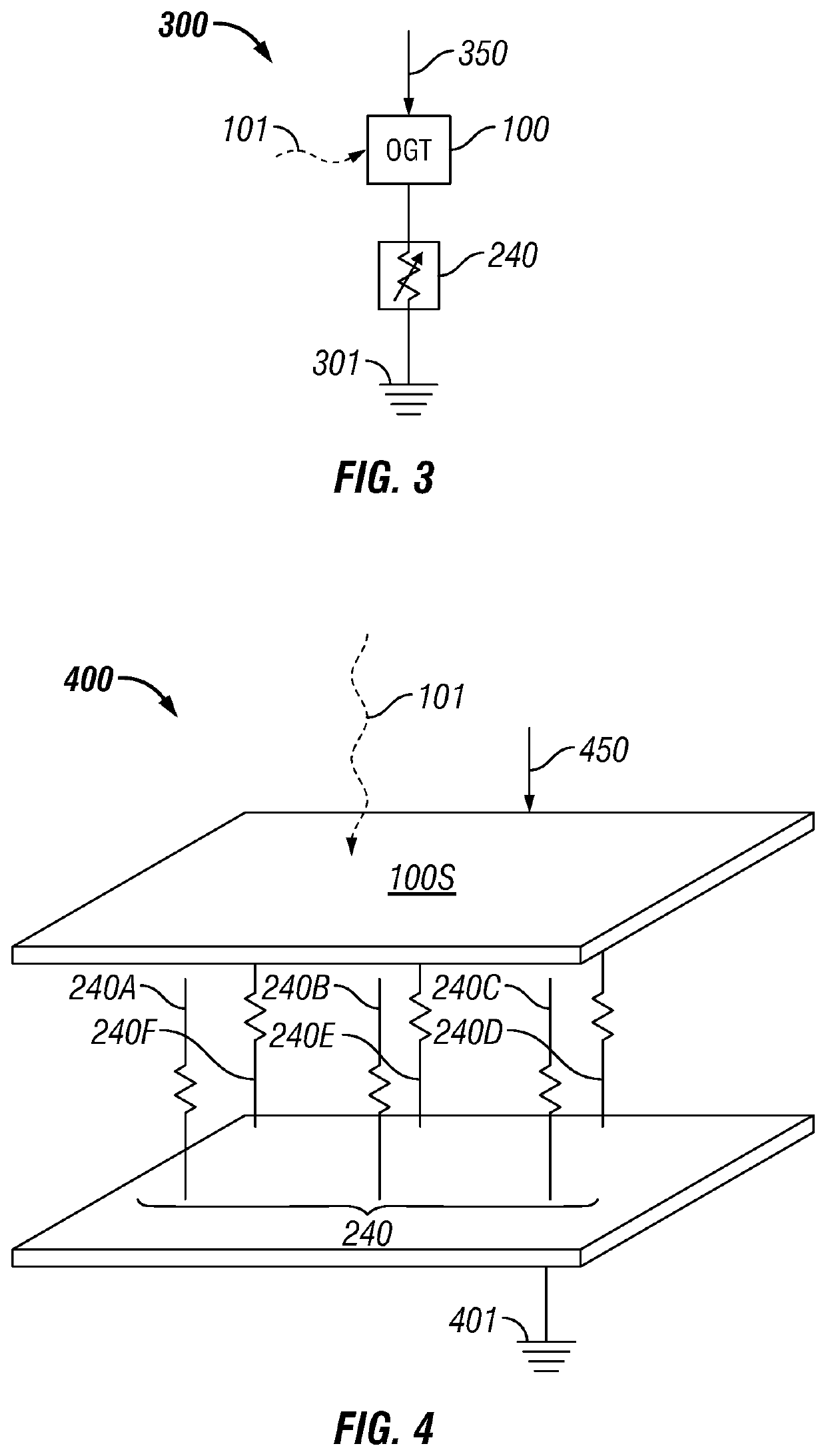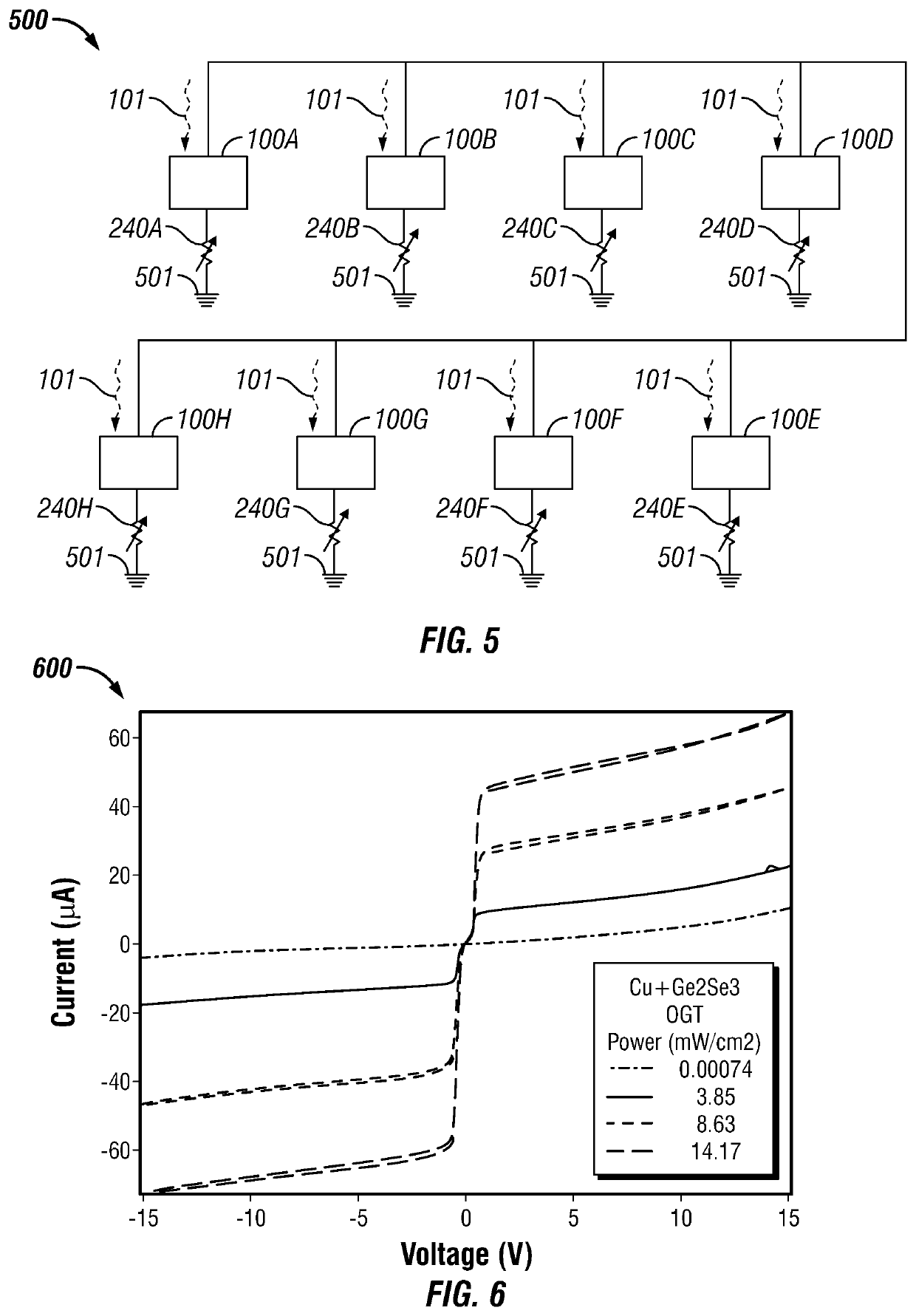Optically gated transistor selector for variable resistive memory device
a variable resistive memory and selector device technology, applied in the field of programming memory devices, can solve the problems of difficult use of variable resistive memory devices, diodes that do not operate bidirectionally, and diodes that cannot properly function as selector devices for arrays of bipolar memristors, so as to reduce light intensity
- Summary
- Abstract
- Description
- Claims
- Application Information
AI Technical Summary
Benefits of technology
Problems solved by technology
Method used
Image
Examples
Embodiment Construction
[0034]A selector device suitable for use with an array comprised of variable resistive memory devices, such as memristors, may be an OGT device as disclosed in U.S. Provisional Patent Application No. 62 / 511,119 entitled Optically Activated Transistor, Switch, and Photodiode filed on May 25, 2017 and U.S. patent application Ser. No. 15 / 990,067 entitled Optically Activated Transistor, Switch, and Photodiode filed on May 25, 2018, both which are herein incorporated by reference. An OGT device may control memristor element, or the like, programming through a combination of voltage and current, where the current is proportional to the intensity and wavelength of light applied to the gate. Operation of the OGT device is in an “enhancement” mode, whereby drain to source current may increase as a function of light intensity. To program the memristor, the OGT device may be operated in saturation, rather than between the active and cutoff modes typically used for a MOSFET transistor switch. T...
PUM
| Property | Measurement | Unit |
|---|---|---|
| thickness | aaaaa | aaaaa |
| thickness | aaaaa | aaaaa |
| thickness | aaaaa | aaaaa |
Abstract
Description
Claims
Application Information
 Login to View More
Login to View More - R&D
- Intellectual Property
- Life Sciences
- Materials
- Tech Scout
- Unparalleled Data Quality
- Higher Quality Content
- 60% Fewer Hallucinations
Browse by: Latest US Patents, China's latest patents, Technical Efficacy Thesaurus, Application Domain, Technology Topic, Popular Technical Reports.
© 2025 PatSnap. All rights reserved.Legal|Privacy policy|Modern Slavery Act Transparency Statement|Sitemap|About US| Contact US: help@patsnap.com



